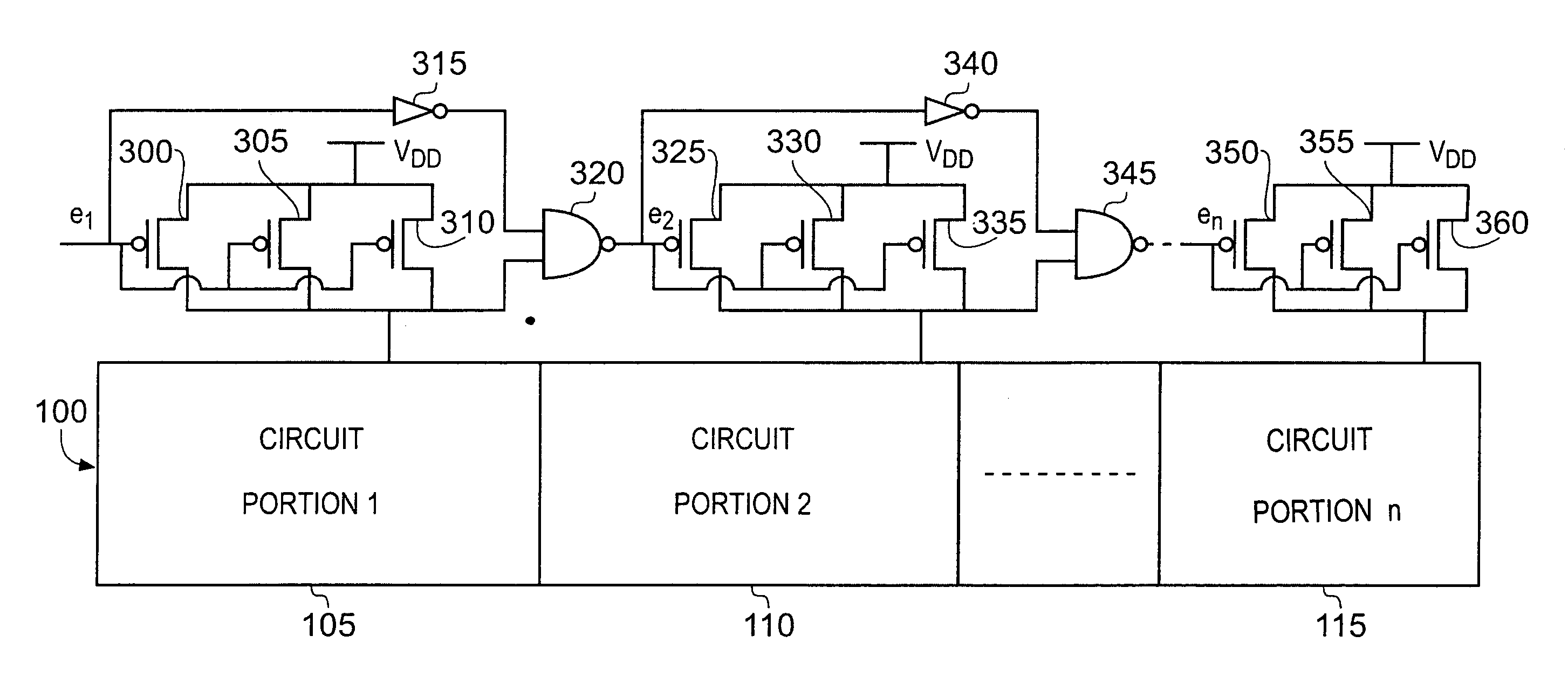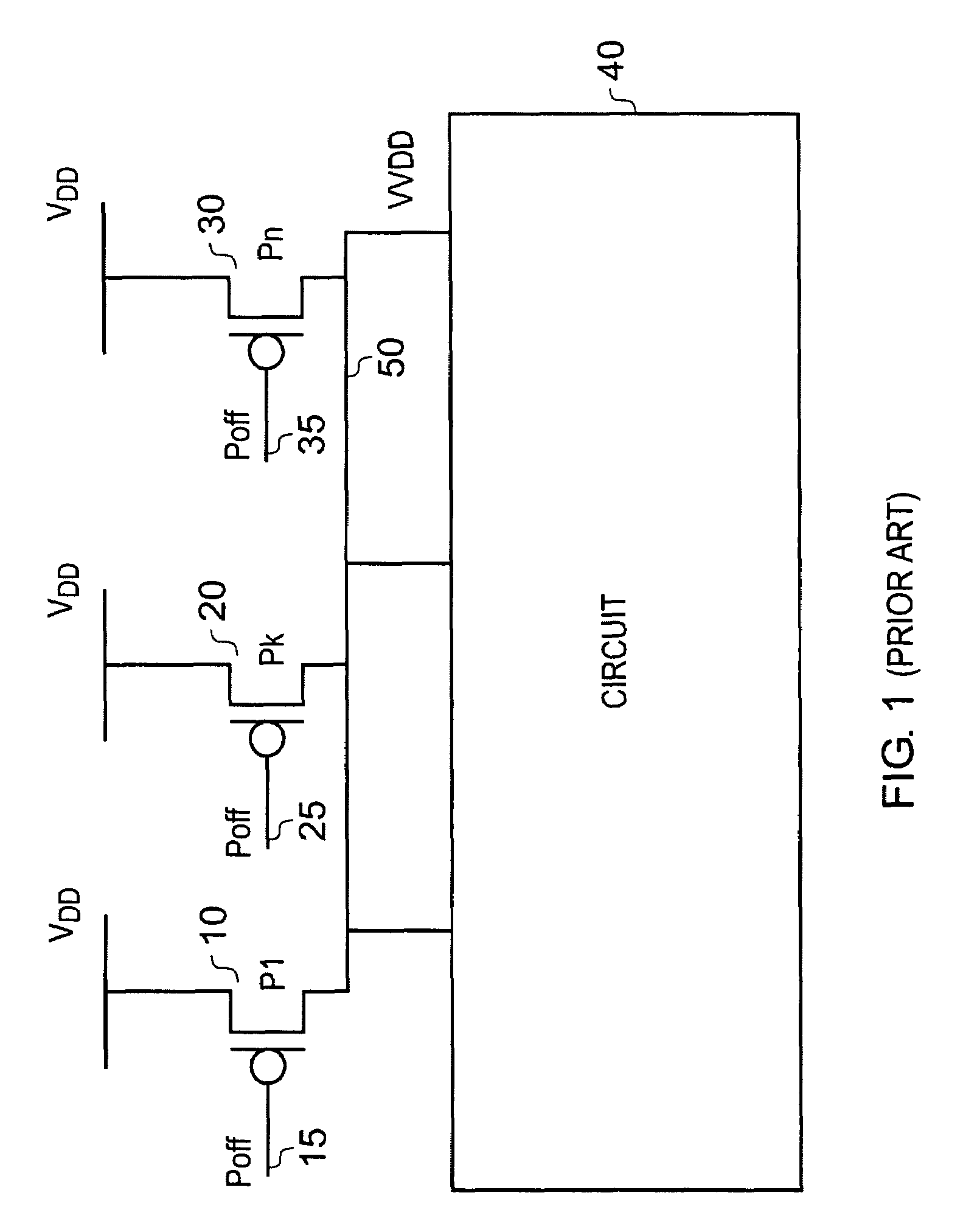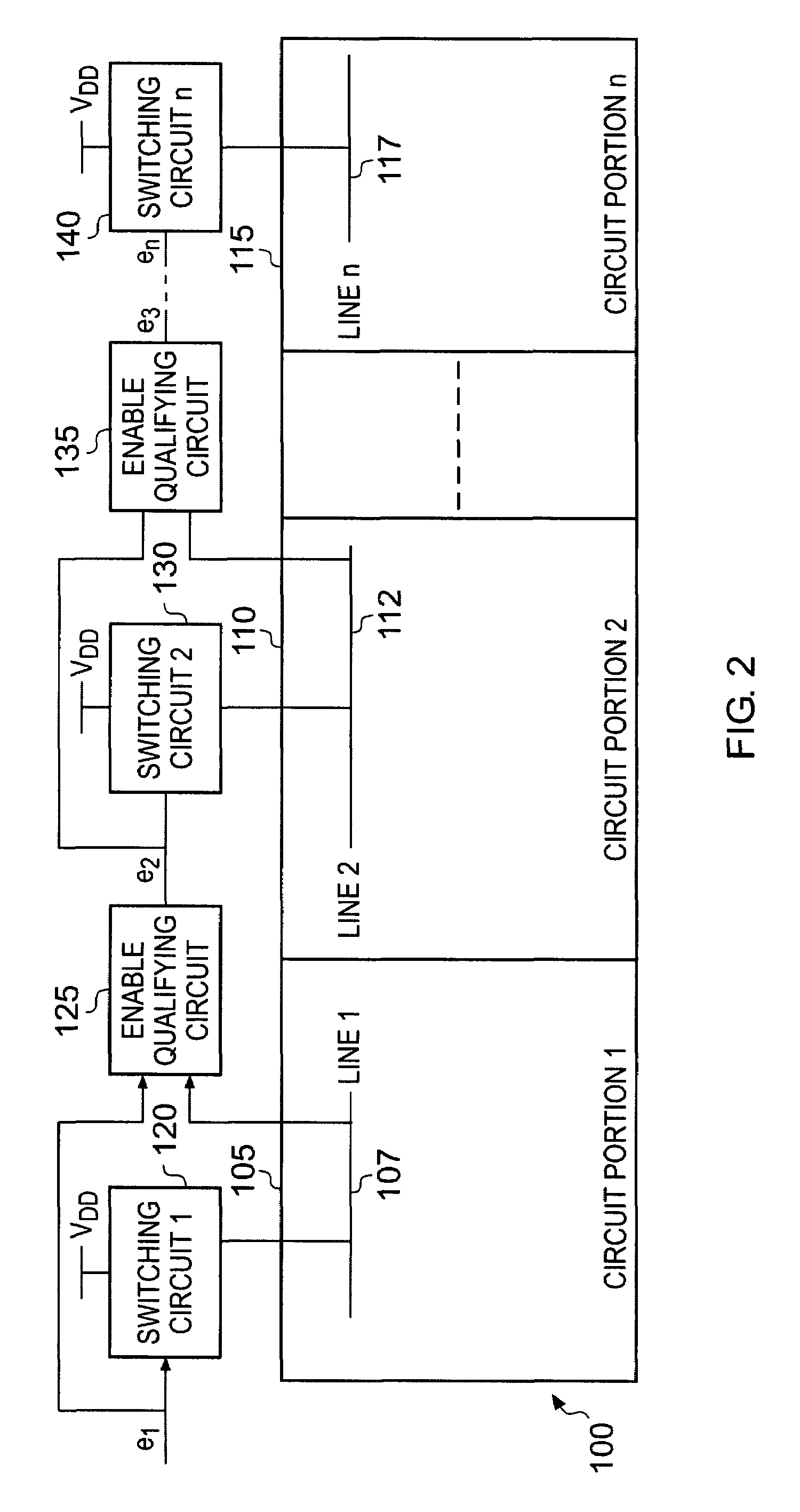Power control circuitry and method
a power control circuit and circuit technology, applied in logic circuits, high-tension/heavy-dress switches, electric variable regulation, etc., can solve the problems of circuits that can consume significant power, circuits that are not easy to operate, and many circuits within the system spend a significant proportion of the time inactive, etc., to achieve the effect of simplifying logi
- Summary
- Abstract
- Description
- Claims
- Application Information
AI Technical Summary
Benefits of technology
Problems solved by technology
Method used
Image
Examples
third embodiment
[0052]Whilst in FIGS. 3 and 4, the various switching circuits have been considered to consist of a single transistor, in alternative embodiments the switching circuits may take different forms. For example, FIG. 5 shows a third embodiment which is analogous to the earlier embodiment described with reference to FIG. 3, but in this case each of the single transistors 200, 215, 230 of FIG. 3 have been replaced with three PMOS transistors in parallel 300, 305, 310, 325, 330, 335, and 350, 355, 360, respectively. The inverters 315, 340 and NAND gates 320, 345 operate in an identical manner to the inverters 205, 220 and NAND gates 210, 225 of FIG. 3. By using multiple transistors in parallel, the switching circuits may be arranged to pull the internal voltage line(s) within the associated circuit portions up towards the operating supply voltage VDD more quickly, assuming similar strength PMOS transistors are used in the embodiment of FIG. 5 to those used in the embodiment of FIG. 3. The u...
first embodiment
[0053]FIGS. 6A to 6D illustrate alternative forms of switching circuit and associated enable qualifying circuit that may be used instead of the arrangement of FIG. 3. Hence, considering FIG. 6A, the PMOS transistor 400, inverter 405 and NAND gate 410 operate in an identical manner to the elements 200, 205, 210, or 215, 220, 225 of FIG. 3. However, in this example, delay circuitry 420 is provided in association with the second input to the NAND gate 410 to increase the predetermined voltage level that must be reached before the output from the NAND gate 410 is set. In this particular example, the delay circuitry takes the form of a sequence of inverters, but it will be appreciated that alternative circuitry could be used instead of inverters to achieve the same effect of delaying the second input to the NAND gate 410.
[0054]FIG. 6B illustrates an alternative embodiment where the inverter is provided in association with the second input rather than the first input as shown in FIG. 3. A...
PUM
 Login to View More
Login to View More Abstract
Description
Claims
Application Information
 Login to View More
Login to View More - R&D
- Intellectual Property
- Life Sciences
- Materials
- Tech Scout
- Unparalleled Data Quality
- Higher Quality Content
- 60% Fewer Hallucinations
Browse by: Latest US Patents, China's latest patents, Technical Efficacy Thesaurus, Application Domain, Technology Topic, Popular Technical Reports.
© 2025 PatSnap. All rights reserved.Legal|Privacy policy|Modern Slavery Act Transparency Statement|Sitemap|About US| Contact US: help@patsnap.com



